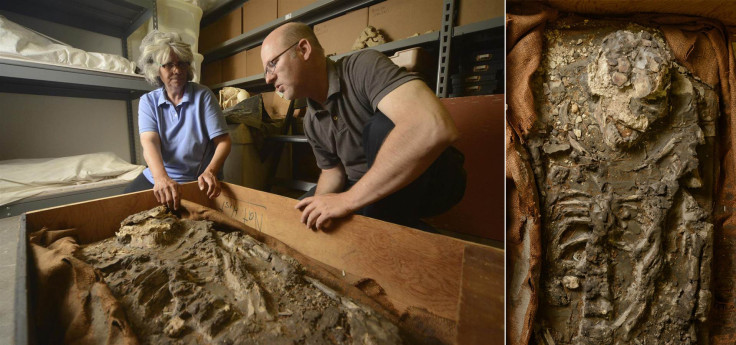Penn Museum Scientists Rediscover 6,500-Year-Old Human Skeleton Stored In Coffin

Scientists at the Penn Museum in Philadelphia, affiliated with the University of Pennsylvania, said on Tuesday that have rediscovered a rare 6,500-year-old human skeleton in one of the museum's storage rooms. The skeleton, which dates back to about 4500 BC, had been stored in a coffin-like box for 85 years.
According to scientists, they had lost track of all identifying documentations for the skeleton, but the paperwork came to light this summer as part of a project to digitize old records from an excavation jointly conducted with the British Museum.
Detailed analysis helped the researchers determine that the skeleton was discovered around 1930, during an excavation led by British archaeologist Sir Leonard Woolley, at the site of Ur, about 10 miles from Nassiriya in southern Iraq.
“Skeletons from this time in the ancient Near East, known as the Ubaid period (roughly 5500–4000 BCE) are extremely rare; complete skeletons from this period are even rarer,” a Penn Museum statement said.
According to Janet Monge, a curator at the Penn Museum, a visual examination of the skeleton suggests that it belonged to a well-built man, aged 50 or older. Buried fully extended, with arms at his sides and hands over his abdomen, the man would have been nearly 5 feet 10 inches tall, scientists said, adding that the ancient man has been named “Noah.”
Researchers also believe that modern scientific techniques, which were not available at the time of Woolley's expedition, could provide them with new information about the diet, ancestral origins, trauma, stress and diseases of the time, details that the museum says are “poorly understood.”
Penn Museum has other remains from ancient Ur among its artifacts, but “Noah” is nearly 2,000 years older than any remains uncovered during the excavation at the site, Reuters reported.
© Copyright IBTimes 2024. All rights reserved.






















